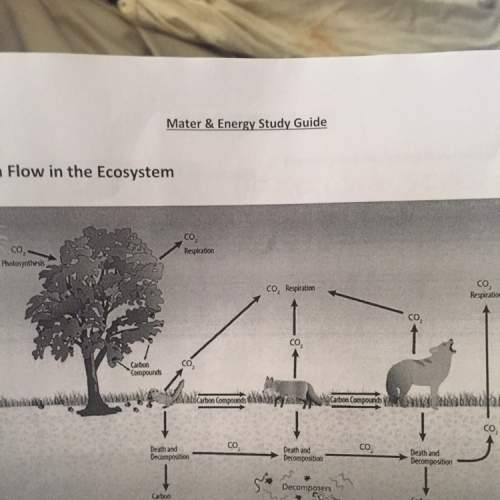
Biology, 25.03.2020 05:08 Tahirahcooke8125
27. (4 PTS) You are studying pollination in the plant Arabidopsis, and you have found a mutation in a gene for stamen length that produces a very long stamen in these flowers. You are interested in crossing these to a mutation from a different lab that produces shorter petals, to see how this combination would affect pollinators like honey bees. When you look these genes up you find they are 24cM apart on Chromosome 12. You contact the other lab and they send you their true-breeding plants with short petals and normal stamens. You cross these to your long stamen plants, and all of the F1’s have short petals and normal stamens. You then cross the F1’s to your long stamen plants. If you collect 100 plants from this cross how many do you expect to have short petals and long stamens?

Answers: 1


Another question on Biology

Biology, 22.06.2019 10:40
_is a product of the first stage of photosynthesis.atpglucosecarbon dioxidewater
Answers: 2

Biology, 22.06.2019 14:10
What do we call the process when two dominant alleles are expressed and do not blend? a.incomplete dominance b.codominance c.multiple alleles
Answers: 2

Biology, 22.06.2019 16:30
You will create a molecular clock model for an arthropod gene. follow these guidelines to make your model: . your timeline will span from 90 million years ago to the present. the common ancestor in your model is an arthropod that lived 90 million years ago. the gene that you'll track codes for a protein in the species venom . the dna sequence youll track contains 10 nitrogen bases. you can choose the order of the bases and where the mutations occur. this gene mutates at a rate of approximately 0.76 base pairs every 17.1 million years. to build your model,/ calculate the estimated time period it takes for 1 base pair to mutate. the first time period will only show the common ancestor. at the beginning of the second time period, three lineages will diverge from the common ancestor, each with a different mutation in their gene sequences. the first and third descendant species will survive for the rest of the timeline. the second descendant species was extinct 50 million years ago. calculate how long it will take for one full base pair mutation to occur. explain your reasoning by constructing a mathematical equation
Answers: 2

Biology, 22.06.2019 18:20
Match the order of the levels of organization in nature with the correct description. example: atoms are fundamental units of matter= level 1levels- 2,3,4,5,6,7,8.now what levels are these? population consists of organismscells consist of moleculesecosystems consist of communities interacting with there environmentmolecules consist of atomsthe biosphere consist of all ecosystems on earthcommunities consists of populationorganisms consist of cells
Answers: 2
You know the right answer?
27. (4 PTS) You are studying pollination in the plant Arabidopsis, and you have found a mutation in...
Questions

World Languages, 20.11.2020 07:50

Chemistry, 20.11.2020 07:50

Mathematics, 20.11.2020 07:50






Mathematics, 20.11.2020 07:50

History, 20.11.2020 07:50




Physics, 20.11.2020 07:50

Geography, 20.11.2020 07:50

Arts, 20.11.2020 07:50

English, 20.11.2020 07:50

Mathematics, 20.11.2020 07:50

Mathematics, 20.11.2020 07:50

English, 20.11.2020 07:50




